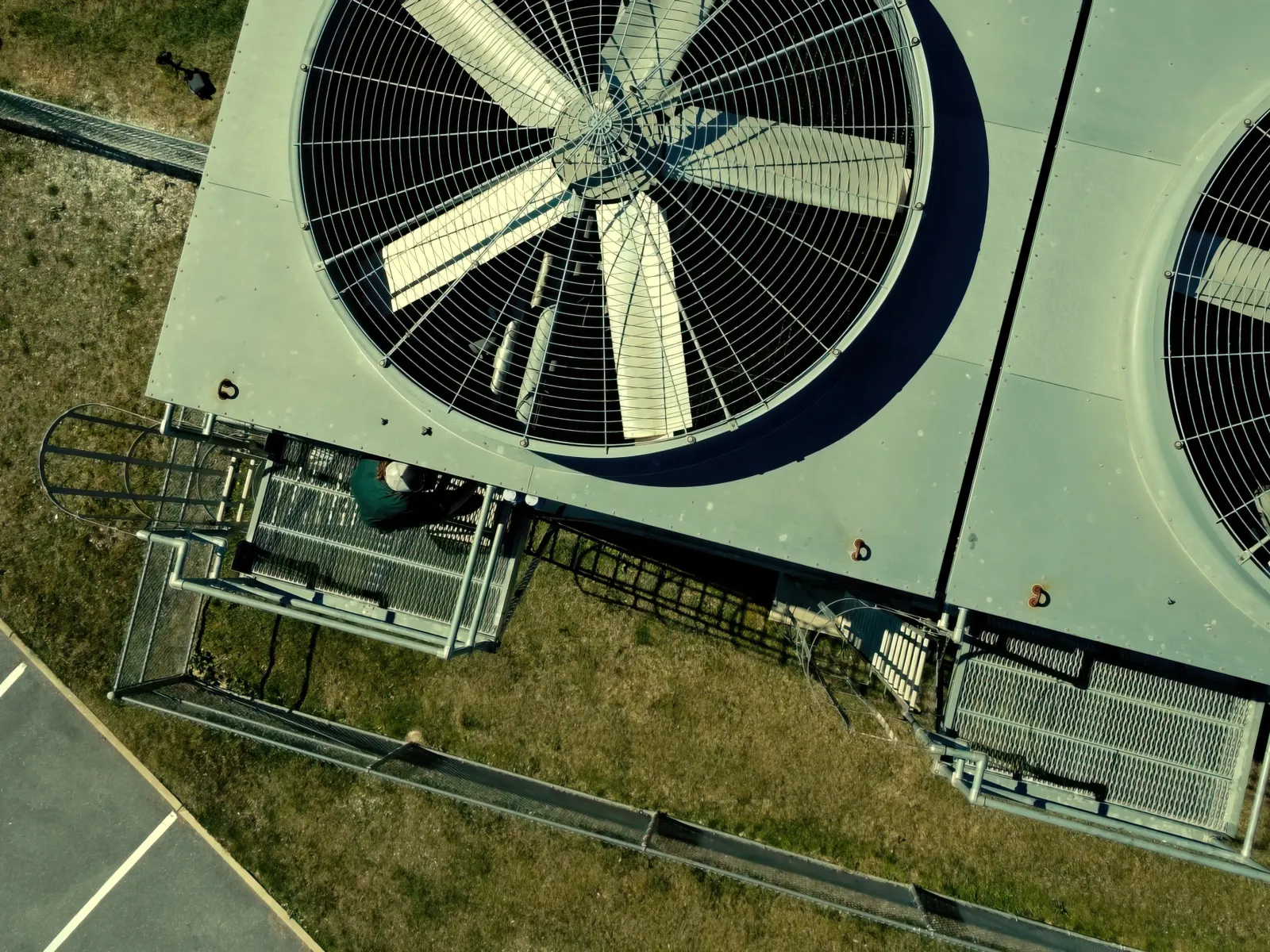
Sales and Marketing Enablement Toolkit
[Commercial]
Sales Enablement
Enable your sales team to properly sell the value of XOi’s enriched data and reports.
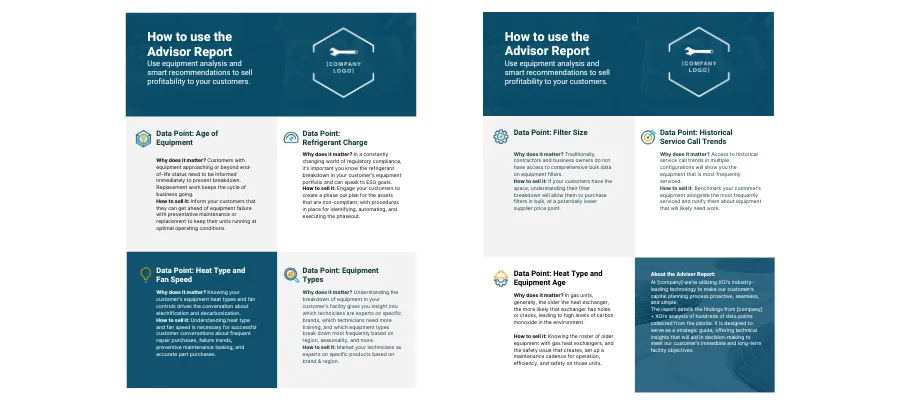
Sales Guide
How to Use the Advisor Report
A guide on how to use XOi's data points to sell profitability and contracts to your customers.
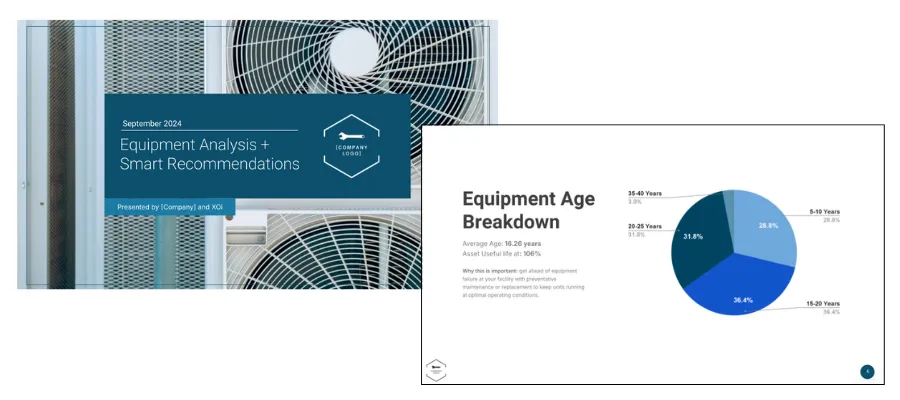
Presentation
Advisor Report Presentation Template
A strategic presentation offering technical insights that will aid in decision-making to meet your customer's immediate and long-term objectives.
Marketing Materials
Market the power of data to current and future customers.
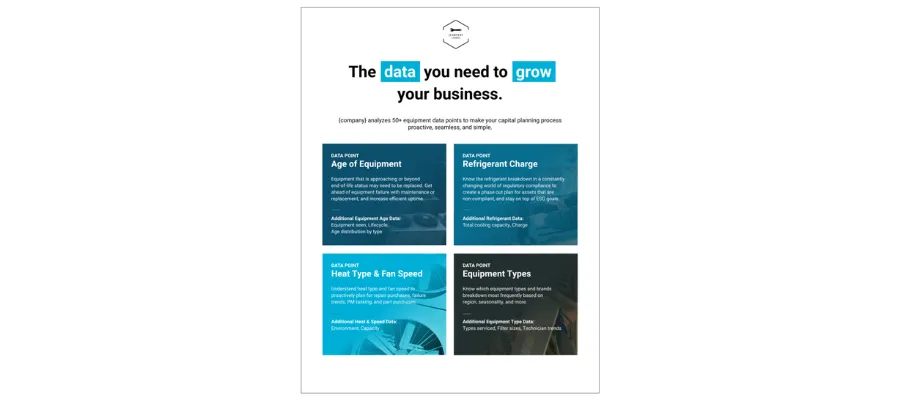
Sales Sheet
Why Data Matters To Your Business
A sales sheet that details how data can boost a business's profitability and improve the capital planning process.
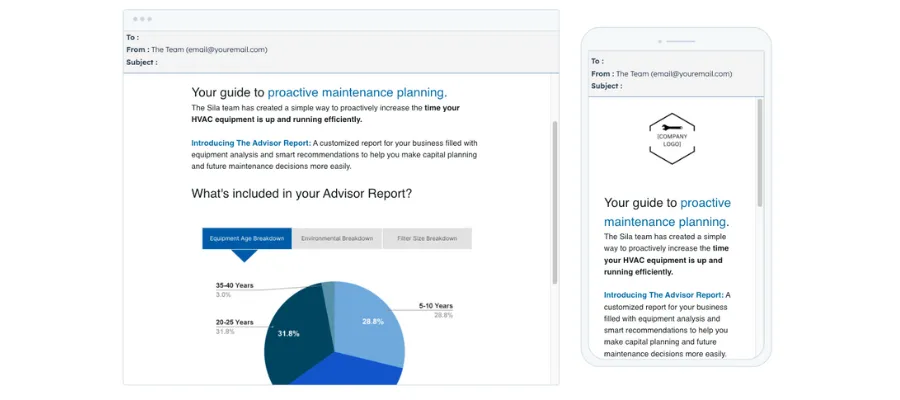
Email Campaigns
Suggested email campaign copy to use in your sales and marketing efforts.
Marketing Campaign Launchpad
Your resource for campaign themes, launch templates, and checklists
Marketing Campaign Themes
Datapoints you can use to sell profitability and maintenance to customers
| Marketing Campaign Theme |
Purpose | Datapoint 1 |
Datapoint 2 |
Datapoint 3 |
| Refrigerant Phase Out | Identifying units that are on the EPA's refrigerant phaseout list, you can educate on EPA regulations and promote phaseout plans | Refrigerant Type | ||
| Age and Refrigerant Phase Out | Identifying units that are old and on the EPA's refrigerant phase out list, you can promote phaseout of older units that fall under EPA regulations that will be more susceptible to issues, which could require additional costly refrigerant. | Age | Refrigerant Type | |
| Age and Heat Type | Identifying units that are old and have specific heating types, you can educate and speak on issues to be mindful of, common problems, and potential concerns that can arise. | Age | Heat Type | |
| Age and Refrigerant Phase Out and Gas Heat | Identifying units that are old, of a certain phased out refrigerant, and are gas heat—for those focused on electrification— having these three data points can convince a customer to replace their equipment. | Age | Refrigerant Type | Heat Type - Gas |
| Useful Life | Identifying units that are above a certain useful life percentage, you can communicate what to look out for in regards to aging units. | Useful Life | ||
| Useful Life and Heat Type | Identifying units that are above a certain useful life percentage, and also have specific heating types, you can speak to things to be mindful of, common problems, and potential concerns that can arise | Useful Life | Heat Type | |
| Equipment Type and Heat Type of Gas | Identifying units of a specific equipment type and of gas heat type, you can promote the need for checking burners, heat exchangers, and gas lines / gas valves. | Equipment Type | Heat Type |
CAMPAIGN OVERVIEW
-
Define campaign objectives:
Lead generation
Brand awareness -
Outline campaign goals & expected outcomes
-
Determine campaign theme, angle, and messaging
-
Identity stakeholders and team roles for campaign execution
TIMELINE
-
Set campaign stat and end dates. Identify key milestones
content deadlines:
Launch dates
Reviews -
Allocate timeline for pre-launch, launch, and post-launch activities
-
Establish dates for periodic check-in and adjustments
-
Create a calendar view for easy timeline tracking
CAMPAIGN MESSAGING
-
Draft primary messaging, focusing on the value proposition and benefits
-
Create clear CTA
-
Ensure all messaging is consistent across channels
-
Align messaging with branding and tone guidelines
AUDIENCE TARGETING
-
Define primary and secondary audience segments
-
Develop buyer personas to guide messaging and targeting
-
Identify targeting criteria, demographics, behavior interests
-
Adjust audience criteria based oncampaign goals (brand awareness vs conversion)
KPI's
-
Define key metrics for success:
CTR
Conversions
Engagement rate -
Set benchmarks or baseline metrics for each KPI
-
Identify tools or dashboards to track KPIs
-
Assign responsibility for KPI tracking and regular updates
-
Plan for mid-campaign KPI reviews to adjust strategy as needed
BUDGETING
-
Establish total campaign budget
-
Breakdown budget allocation by channel and activity
-
Allocate funds for contingency in case of unexpected costs
-
Set budget limits for each stage of the campaign
-
Track spending throughout the campaign to stay within budget
PERFORMANCE REVIEW
-
Schedule post-campaign review meeting
-
Collect and analyze data for each KPI
Evaluate campaign ROI -
Identify successful elements and areas for improvement
-
Document key learnings and recommendations for future campaigns
-
Share findings with stakeholders and update and related campaign resources